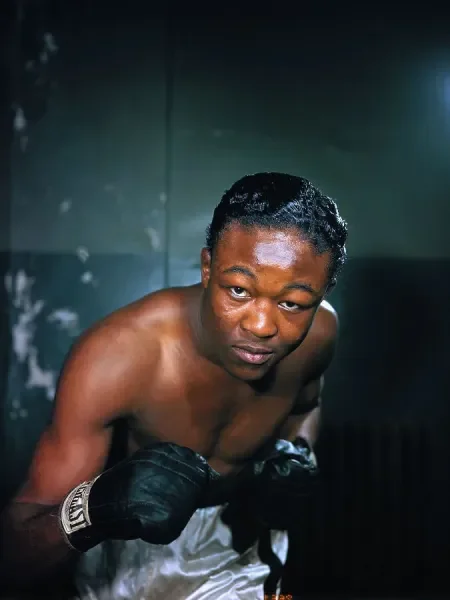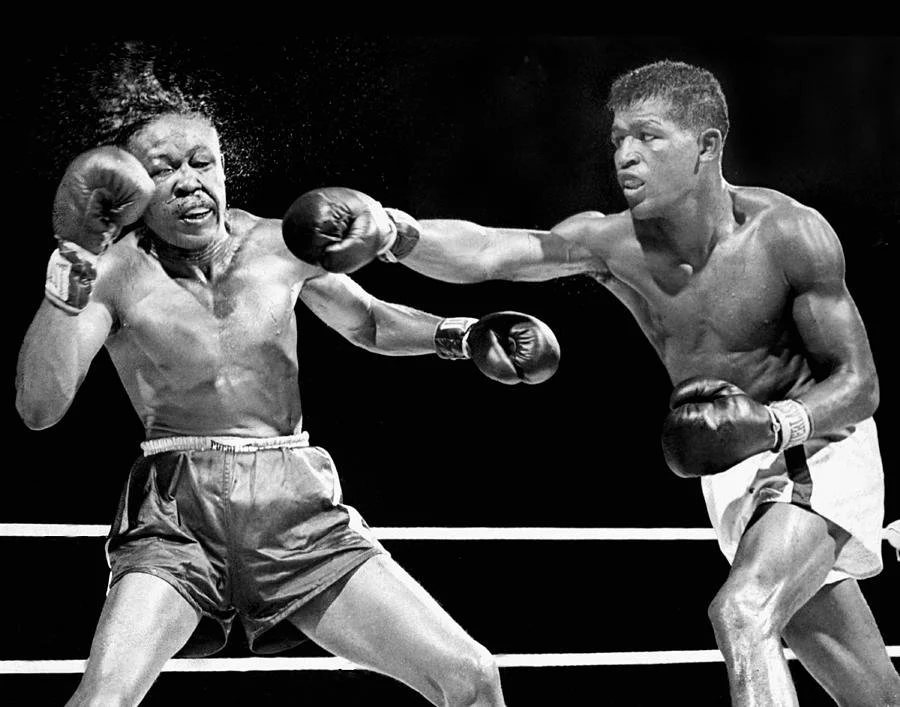FEATURED ARTICLE
HOLLY HUMPHREY
The Cuban Hawk
THE SCORECARD / THE CUBAN HAWK
Kid Gavilan was born Gerardo Maras on January 6, 1929, in Camagüey, Cuba, the son of a labourer who left before the boy could remember his face. His mother remarried and Gerardo took the name of his stepfather, Gonzalez. Life in the sugar fields left little time for childhood. By twelve he was swinging a seven-pound bolo knife, cutting cane under a sun that made the air itself feel heavy. The work built his strength, and some say that the fluid motion of that knife taught him the movement that would later become his signature in the ring - the bolo punch.
He had no money, no schooling to speak of and no real path beyond the fields. Then, around fifteen, a small gym opened nearby. The boy walked in, wrapped his hands and began to fight. He fought with the kind of rhythm that can’t be taught. Within two years he was in Havana winning fights for a living. His first manager, Francisco Bolito, renamed him Kid Gavilan to advertise his cafe, El Galivan - “The Hawk”. It was meant as a gimmick, but the name fit. Gavilan had the presence of something that moved on its own terms.
At seventeen he turned professional. He fought often, earning twenty-five wins in his first twenty-seven bouts. Then came New York, where the money and the spotlight were bigger and the temptations closer. His new manager, Angel Lopez, was a nightclub owner who knew how to draw a crowd. Gavilan became a favourite among fans and writers. The bolo punch became his signature, a looping, taunting strike thrown with a flash of the wrist.
He was talented enough to beat almost anyone and undisciplined enough to make it interesting. Some nights he seemed unstoppable; others he drifted, giving away rounds as though time were his to spare. By the end of 1948 he had strung together enough wins to earn a fight with Sugar Ray Robinson, who was already the finest boxer alive. Their first meeting was a disappointment, fifteen cautious rounds and a decision for Robinson. A year later they met again. Gavilan pressed harder, fought smarter and still came up short.
He stayed busy, winning more often than not, until in 1951 the welterweight title came open after Robinson moved up to middleweight. Gavilan beat Johnny Bratton for the vacant crown, fifteen rounds of relentless pressure. For the first time, the boy from the sugar fields was world champion. His first defence came against Gil Turner, an unbeaten Philadelphia fighter with a big reputation. The fight was everything boxing is supposed to be, speed and courage. Turner came forward all night; Gavilan held his ground and took him apart. By the final bell, Gavilan had confirmed what his believers already knew: he was the best welterweight in the world.
More wins followed, Billy Graham, Chuck Davey and others. Against Davey, a slick southpaw, Gavilan fought with his hands low and mocked his opponent by switching stance mid-fight. Critics accused him of carrying the challenger for television, with one reporter calling Gavilan “the greatest carrier since Typhoid Mary”.
But boxing has a way of collecting its debts. In 1954, Gavilan lost his title to Johnny Saxton in a dull, disputed decision. Years later it came out that his own manager had struck a private deal with Saxton’s handlers - men tied to Blinky Palermo’s mob operation - for cash if Gavilan put the title on the line. Gavilan fought as though he had won, but the scorecards went the other way. Afterward, he told friends he felt robbed not just by the judges, but by the man in his own corner.
His wife divorced him soon after. The money disappeared. The years that followed were a slow decline, a few wins, more losses, the reflexes fading one round at a time. He retired in 1958 with 108 victories, 30 defeats and 5 draws. No one ever stopped him in a fight.
Then came the hardest part.
He returned to Cuba with a lifetime’s earnings and the hope of peace, but Fidel Castro’s revolution changed everything. Gavilan, now a devout Jehovah’s Witness, was arrested for preaching on the streets, charged with “conspiring against the regime”. He spent eight years caught between poverty and surveillance. His body was breaking down, a bad back, cataracts, but he refused to bend. When he finally left Cuba in 1966, he carried little more than his name.
In Tampa he found work cleaning parks for a hundred dollars a week. Later, almost blind, he worked as a security guard in Pennsylvania, then sold sausages on the streets of Florida. Fans who recognised him found him gracious, still carrying himself like a fighter. He never complained publicly. What had happened, had happened.
By the end of his life he was nearly blind, living in an assisted-living facility in Hialeah, Florida. He died in 2003, penniless and alone. The man who had once ruled the welterweights was buried in an unmarked grave, remembered by a handful of old fight men and the echoes of his bolo punch.
Two years later, that wrong was corrected. Ray Mancini, Mike Tyson, and others raised the money to have his remains moved and properly buried. His new headstone ready simply:
Kid Gavilan - World Welterweight Champion.
It was the title he earned.



